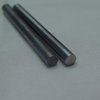gonoles_1980
Member
A couple of questions.
Recently I have been getting 1 or 2 high primers in a batch of 50 44 spl. The cylinder won't move because the primer wasn't pushed in all the way. This just started happening recently. Doesn't happen when prime 44 mag cases. I am using the Lee hand primer for large primers.
1) Any thoughts on how I can catch these somewhat easily before I load the power and seat the bullet?
2) Any chance, I can push the primer in using my press on the bullets that have the high primer? I am assuming that's too dangerous with a loaded bullet, but thought I'd ask. I figure I will have to pull the bullet, then reseat the primer.
Recently I have been getting 1 or 2 high primers in a batch of 50 44 spl. The cylinder won't move because the primer wasn't pushed in all the way. This just started happening recently. Doesn't happen when prime 44 mag cases. I am using the Lee hand primer for large primers.
1) Any thoughts on how I can catch these somewhat easily before I load the power and seat the bullet?
2) Any chance, I can push the primer in using my press on the bullets that have the high primer? I am assuming that's too dangerous with a loaded bullet, but thought I'd ask. I figure I will have to pull the bullet, then reseat the primer.





